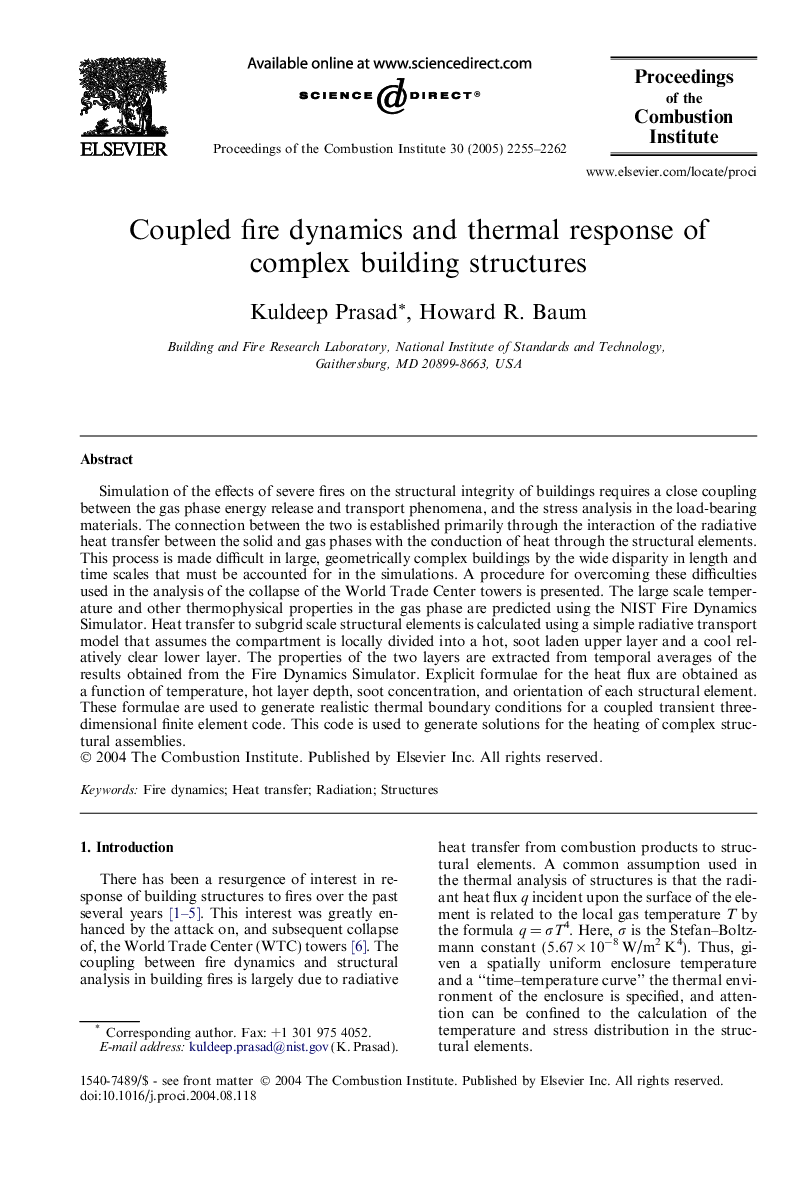| کد مقاله | کد نشریه | سال انتشار | مقاله انگلیسی | نسخه تمام متن |
|---|---|---|---|---|
| 240971 | 1427930 | 2005 | 8 صفحه PDF | دانلود رایگان |

Simulation of the effects of severe fires on the structural integrity of buildings requires a close coupling between the gas phase energy release and transport phenomena, and the stress analysis in the load-bearing materials. The connection between the two is established primarily through the interaction of the radiative heat transfer between the solid and gas phases with the conduction of heat through the structural elements. This process is made difficult in large, geometrically complex buildings by the wide disparity in length and time scales that must be accounted for in the simulations. A procedure for overcoming these difficulties used in the analysis of the collapse of the World Trade Center towers is presented. The large scale temperature and other thermophysical properties in the gas phase are predicted using the NIST Fire Dynamics Simulator. Heat transfer to subgrid scale structural elements is calculated using a simple radiative transport model that assumes the compartment is locally divided into a hot, soot laden upper layer and a cool relatively clear lower layer. The properties of the two layers are extracted from temporal averages of the results obtained from the Fire Dynamics Simulator. Explicit formulae for the heat flux are obtained as a function of temperature, hot layer depth, soot concentration, and orientation of each structural element. These formulae are used to generate realistic thermal boundary conditions for a coupled transient three-dimensional finite element code. This code is used to generate solutions for the heating of complex structural assemblies.
Journal: Proceedings of the Combustion Institute - Volume 30, Issue 2, January 2005, Pages 2255–2262